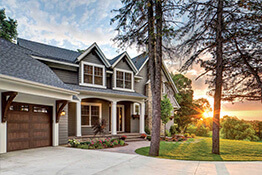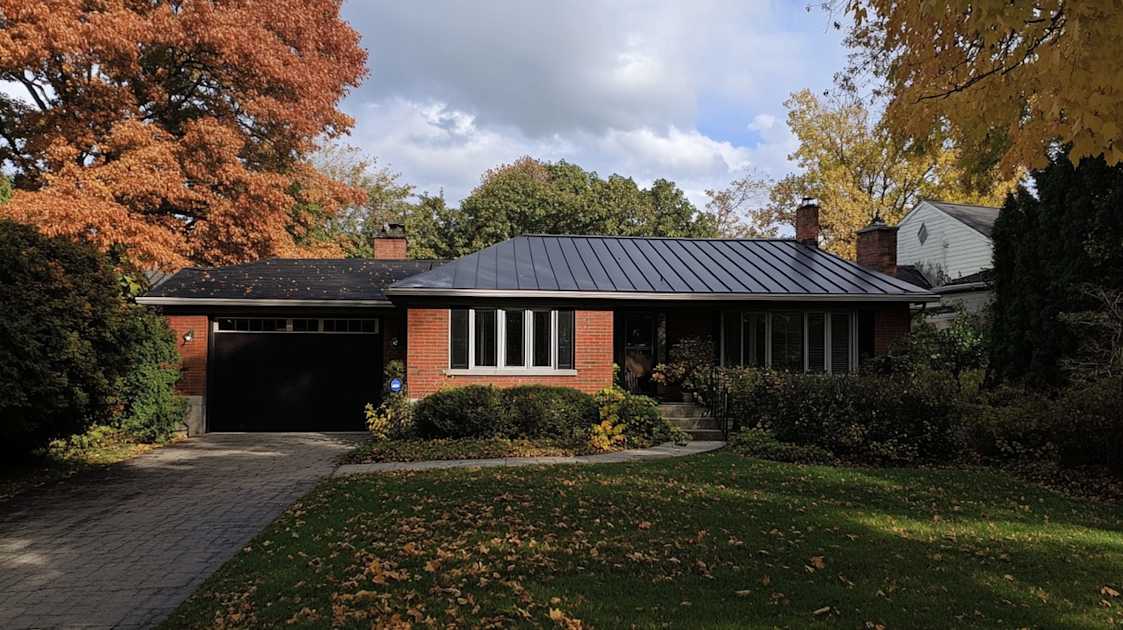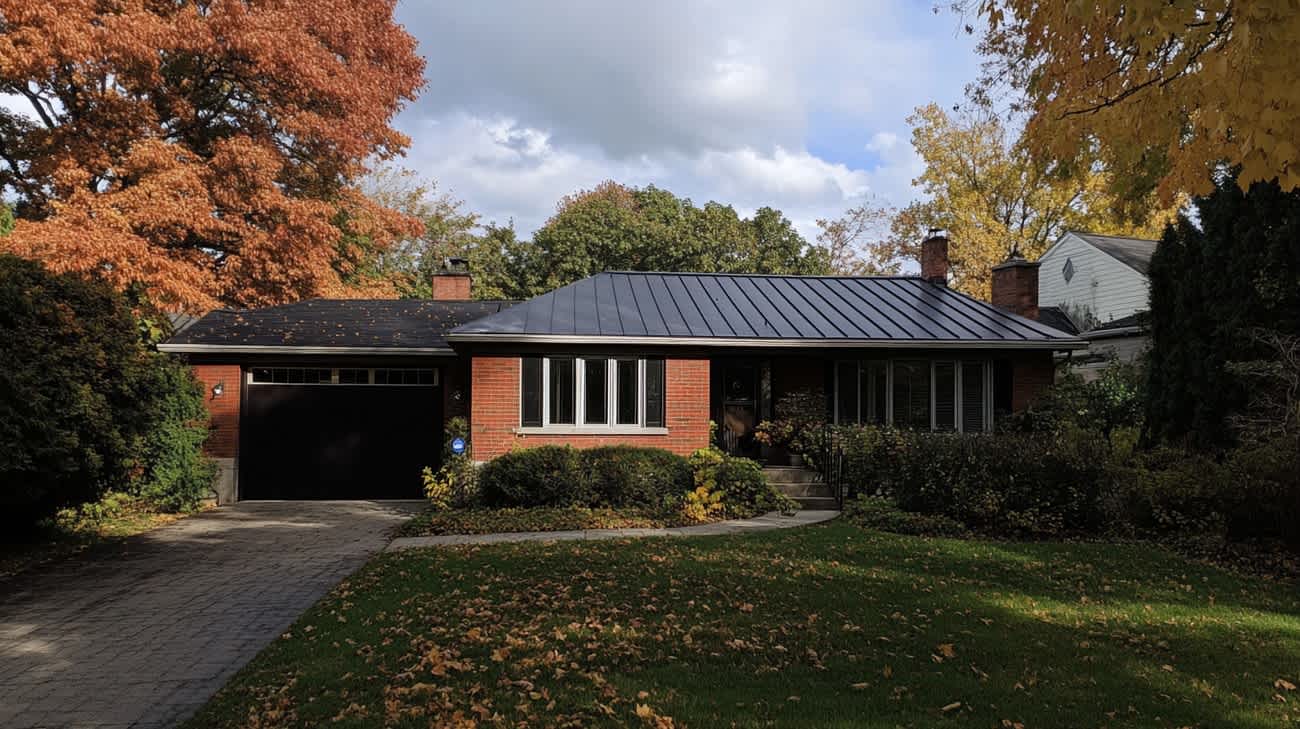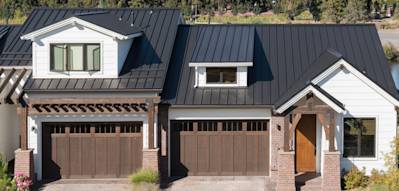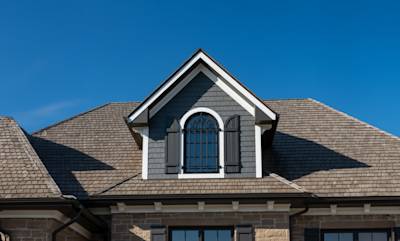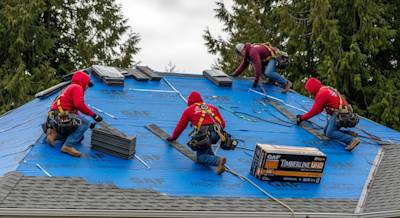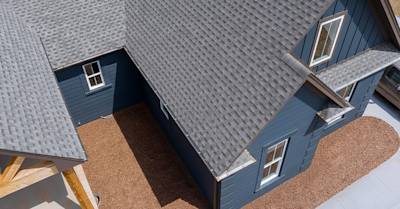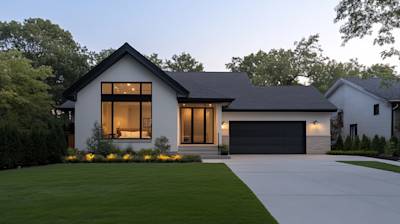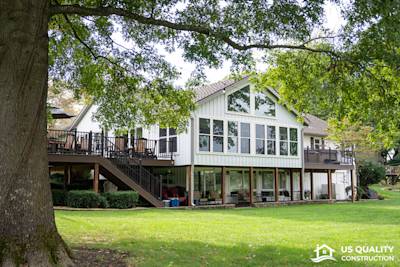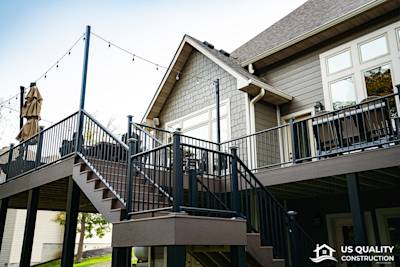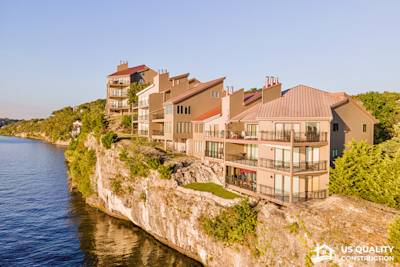Homeowners today are blessed with an array of choices for their roofing needs. And among these options, metal roofs and shingles remain at the top of the preference list. However, when it comes down to picking between the two, the decision becomes rather challenging. Through this detailed guide, we'll help shed light on the key aspects of metal roofs and shingles – enabling you to make an informed choice.
Understanding Metal Roofing
Metal roofs are known for their durability, longevity, and significant resistance to severe weather conditions. They come in sheets or panels that are fastened together using concealed fasteners. Standing seam, corrugated metal, and metal shingles are the primary types of metal roofing systems available. They are typically made from steel, aluminum, zinc, or copper.
Some key features of metal roofing include:
- Lifetime: Metal roofs are long-lasting, with a lifespan of around 40-70 years.
- Weight: They are lightweight, reducing the strain on your home's structure.
- Weather resistance: Metal roofs are highly resistant to extreme weather conditions, including high winds, hail, and heavy rain.
- Fire resistance: Since they are non-combustible, they offer significant fire resistance.
Understanding Shingle Roofing
Shingle roofing, on the other hand, is an all-time favorite among homeowners for their affordability and aesthetic appeal. Asphalt shingles, among the most common type, come in two varieties: architectural (dimensional) shingles and three-tab shingles.
Here are a few noteworthy features of shingle roofing:
- Lifetime: The average lifespan of asphalt shingles is around 20-30 years.
- Weight: They are heavier than metal roofs, sometimes requiring structural reinforcement.
- Weather resistance: Well-installed shingles can withstand high winds and heavy rain but might be prone to damage in case of hail.
- Fire resistance: Grade A asphalt shingles are fire-resistant.
Metal Roof vs Shingles: Cost Analysis
The cost factor invariably drives many of our decisions. In the case of metal roofing vs shingles, a thorough cost analysis is indispensable.
Metal roofs can cost anywhere from $7 to $14 per square foot. Adding installation charges, the total cost could potentially rise around $9 to $20 per square foot.
Asphalt shingle roofing stands cheaper costing between $3.50 and $5 per square foot. When you include labor cost, prices can go up to $5 to $7 per square foot.
Despite the upfront cost being significantly higher for metal roofs, they prove to be cost-effective in the long run given their durability and low maintenance needs.
Performance and Durability: Shingles or Metal?
When examining the performance and durability attributes of metal roofs vs shingles, you'll find that both materials have their strengths.
Metal roofs offer exemplary longevity and can remain in top condition for several decades, even in harsh weather conditions. They rarely require repairs and are resistant to rust, rot, and insect infestation.
Shingle roofing, while not as long-lasting, can prove sufficiently durable with proper installation and periodic maintenance. Upgraded shingles of high build-quality have been known to outlive their standard lifespan.
Environmentally Friendly Option: Metal Roofs or Shingles?
In terms of environmental sustainability, metal roofs clearly have an advantage. They are generally made from recycled materials and are fully recyclable at the end of their life cycle. The high reflectivity of metal roofs reduces energy consumption by keeping homes cooler in summer.
Contrarily, asphalt shingles are not recyclable in many areas and sometimes end up in landfills at the end of their lifespan. However, there are few shingle recycling programs that transform old shingles into road materials and other products.
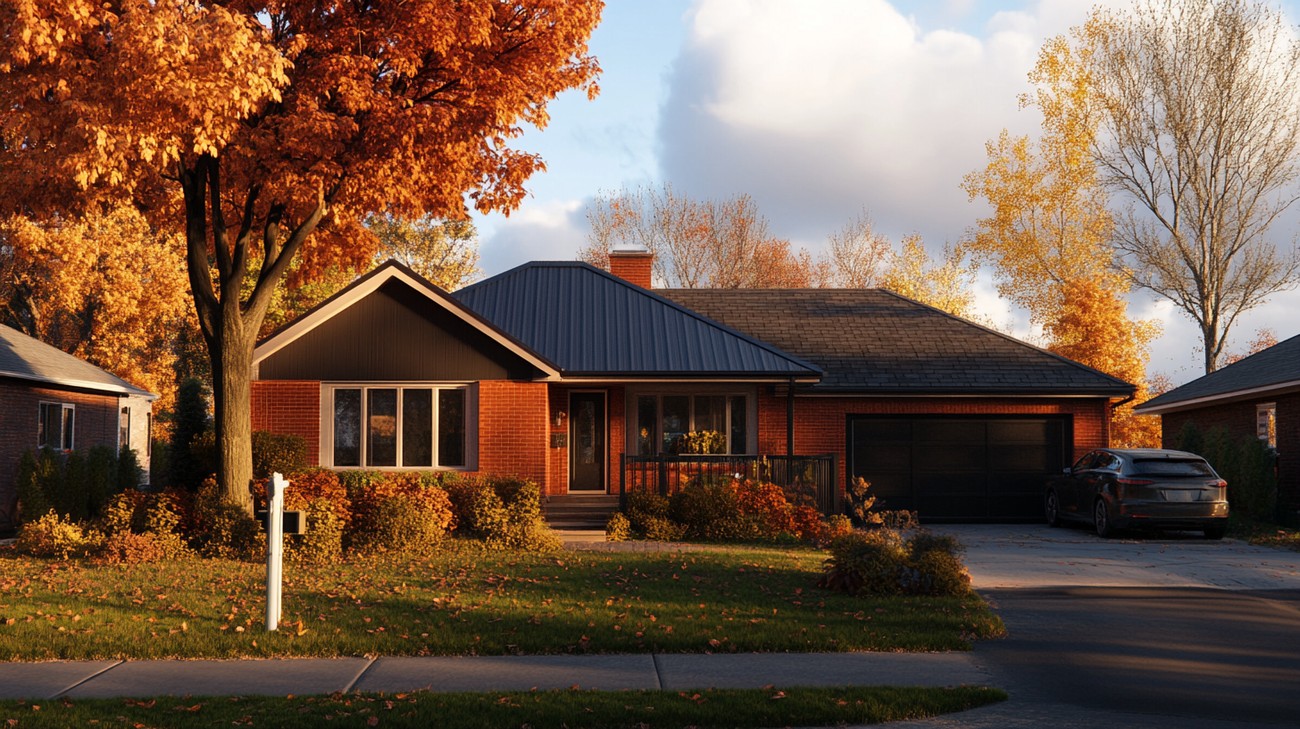
Frequently Asked Questions about Metal Roof Vs Shingles
How much does a metal roof cost compared to shingles?
Metal roofs can be more expensive upfront compared to their counterpart - shingles, costing between $150 to $600 per square. Shingles, particularly asphalt ones, are cheaper and cost between $80 to $100 per square. However, the overall cost might shift when considering the lifespan and maintenance expenses of both roofing types.
What is the lifespan of a metal roof compared to shingles?
One of the prime advantages of a metal roof is its longevity. A metal roof can easily last 50 years or more with the right maintenance. Contrastingly, shingles typically have a lifespan of around 15 to 25 years, which might vary depending on the quality and maintenance.
Are metal roofs more energy-efficient compared to shingles?
Yes, metal roofs are generally more energy-efficient than shingles. Their ability to reflect solar radiant heat can reduce cooling costs significantly during summers. Meanwhile, darker shingle roofs tend to absorb heat, making them less efficient at energy conservation.
How do metal roofs and shingles fare in terms of durability?
Durability is yet another point where metal roofs topple shingles. Metal roofs boast a high resistance to harsh weather conditions, including fierce winds, hailstorms, and fires. Shingles, although not as sturdy as metal roofs, can withstand typical weather conditions but might not hold up as well in extreme scenarios.
Is a metal roof noisier than shingles?
With proper insulation, a metal roof should not be any noisier than a shingle roof. However, during heavy rain or hailstorms, a metal roof could produce more noise than shingles.
How does maintenance for a metal roof compare with that of shingles?
Maintenance for metal roofs is generally lower compared to that required for shingles. Unlike shingle roofs, metal roofs do not sustain damage from moss or algae growth, and they also resist rust. However, they may need repainting over time.
What is the environmental impact of a metal roof vs. shingles?
In terms of environmental impact, metal roofs edge out, mainly because they are often crafted from recycled materials and are almost 100% recyclable at the end of their lifetime. On the other hand, most shingle waste contributes to landfills. However, some innovative companies are finding ways to recycle shingle waste into road paving materials.
How does the installation process differ between a metal roof and shingles?
Metal roofs are generally more challenging and time-consuming to install compared to shingles, and might require a professional with specific expertise in metal roofing. Shingle installation is comparatively straightforward, making it a popular choice for DIY enthusiasts.
Do metal roofs offer more design and color options compared to shingles?
Metal roofing tends to offer fewer design and color options compared to shingles. However, the possibilities of metal roof design have increased in recent years, and you can now find them in different styles that mimic wood shakes, slate, tile, and even traditional shingles.

Pros of Metal Roofs
Durability
Metal roofs generally offer superior durability compared to shingles. Typically, a well-installed metal roof can last anywhere between 40 to 70 years, depending on the specific metal used. This is a stark difference to the average lifespan of a shingle roof, which can span from 20 to 25 years.
Resistance to Extreme Weather Conditions
One of the most prominent advantages of metal roofs is their strong resistance to extreme weather conditions. Whether it's heavy rain, high winds, hail, or extreme heat, metal roofs show remarkable resilience. Further, metal roofs are not susceptible to damage from snow and ice, as these elements slide off rather than accumulate and create a pressure load.
Energy Efficiency
Metal roofs can be more energy-efficient than shingle roofs. They can effectively reflect solar radiant heat, reducing cooling costs by 10–25%. For homeowners living in areas where temperatures can skyrocket, this could mean significant savings in the long run.
Fire Resistance
Compared to their shingle counterparts, metal roofs are more fire-resistant. This can be a critical advantage, particularly in regions prone to wildfires or in situations where airborne sparks from a nearby fire could pose a risk.
Environmentally Friendly
Metal roofs can be made from 25–95% recycled material, depending on the material used. Moreover, at the end of their lifespan, they're 100% recyclable, making them a more sustainable choice compared to shingle roofs, which can end up in landfills.
Cons of Metal Roofs
Higher Initial Costs
A major drawback of metal roofs is their higher initial costs compared to shingle roofs. The cost could even be triple that of quality shingle roofs, posing a substantial upfront financial investment.
Noise
In cases of heavy rain or hail, metal roofs can be noisier than shingle roofs. While some homeowners might find the sound of rain on a metal roof comforting, others could consider it disruptive.
Expansion and Contraction
Metal roofs, particularly those with long panels, can expand and contract with temperature fluctuations. If not properly installed with specialized fasteners that accommodate this movement, the panels might experience damage over time.
Pros of Shingle Roofs
Lower Initial Costs
Shingle roofs are often sought after due to their lower initial costs. The combination of material expenses and the ease of installation result in a significantly more affordable roof compared to metal options.
Versatility
Shingles offer a wide variety of options regarding colors, shapes, and textures, allowing homeowners to match their roofs to their overall aesthetic preference. Depending on the type of shingles used – asphalt, wood, tile, or slate – the possibilities are vast.
Easy Installation
Shingle roofs are relatively easy to install compared to their metal counterparts. This not only reduces labor costs but also shortens the time it takes to replace or install a new roof.
Cons of Shingle Roofs
Shorter Lifespan
As mentioned earlier, the lifespan of a shingle roof is typically shorter than that of a metal one. Depending on the type of shingles used and the climatic conditions of the region, this could range from 15 to 30 years.
Prone to Weather Damage
Unlike metal roofs, shingle roofs are susceptible to severe weather damage. Intense sunlight, freezing temperatures, high winds, and heavy rain can cause shingles to crack, break, or fly off, leaving the roof susceptible to leaks.
Environmental Impact
Shingles, particularly asphalt ones, are not the most environmentally friendly roofing option. Most asphalt shingles are not recyclable and end up in landfills at the end of their lifespan. Their manufacture also releases greenhouse gases, while their disposal can potentially leach pollutants into the ground.

Myths and Misconceptions About Metal Roof vs. Shingles
The decision between using metal roofing or shingles often incites debates among homeowners, builders, architects, and contractors. There are several myths and misconceptions surrounding the choice of metal roofs vs. shingles, which can influence decision-making. Let's delve deeper into these misconceptions and dispel them with factual information.
Myth 1: Metal Roofs Attract Lightning
This is a common misconception that has discouraged many from considering metal roofs. People often believe that a metal roof will act like a giant antenna, attracting lightning to strike the house. While it is true that metal conducts electricity, it doesn’t necessarily attract it.
Attraction Factors for Lightning
Lightning is attracted to the highest point, not necessarily the most conductive. That means a tree or telephone pole next to your house is more likely to get hit by lightning than a metal roof.
Safety in Case of a Strike
Furthermore, even if lightning did hit a metal roof, the current would be safely dispersed throughout the structure, reducing the level of damage.
Myth 2: Shingles are Always Cheaper than Metal Roofs
While it is true that initial costs of asphalt shingles can be less than metal roofing, it doesn't always mean they are a more cost-effective choice in the long run.
Long-Term Costs
Metal roofs typically last up to 3 times longer than shingles and require less maintenance. So, while shingles may cost less upfront, their shorter lifespan and higher maintenance cost can make them more expensive over time.
Resale Value
Moreover, a metal roof can improve your home's resale value, as they are often seen as a premium upgrade to potential buyers.
Myth 3: Metal Roofs are Noisier in Rain and Hail
Yes, a barn with an exposed and non-insulated metal roof might be louder in a rainstorm, but this is not the case with residential metal roofs.
Effect of Insulation
Residential metal roofs are installed over a solid sheathing that, along with roof insulation, can significantly dampen the noise of rain or hail, making it as quiet as an asphalt shingle roof.
Myth 4: Shingles Offer More Design Versatility
This myth is associated with the belief that shingles come in more varieties of color and design than metal roofs.
Metal Roof Design Options
In actuality, current metal roofing technology offers numerous colors and styles, including options that mimic the look of traditional shingles, wood shakes, and clay tiles.
Myth 5: Metal Roofs Will Rust
This is perhaps linked to old images of rusty barn roofs.
Modern Metal Roofing
However, today's metal roofing materials are designed to be resistant to rust. They are treated with special coatings which prevent rust and decay, thus ensuring their durability and longevity.
Myth 6: It’s Impossible to Walk on Metal Roofs
While walking on metal roofs requires caution (as with any roof), it's a myth that it can't be done at all without damaging the roof.
Walking Safely on a Metal Roof
Installers and maintenance professionals are trained to walk on metal roofs safely, taking care to avoid potential damage.
In conclusion, while choosing between a metal roof and shingles is a matter of personal preference and budget, it is important to separate the myths from the facts. Whether you're swayed by the longevity and durability of metal roofs, or prefer the traditional aesthetic and initial costs of shingles, make your choice based on solid information and not misconceptions.
Summary
So, "metal roof vs shingles" - it's not simply a toss-up, as each comes with its unique benefits and drawbacks. Metal roofs, for instance, are built to last, easy to maintain, resistant to extreme weather and are energy efficient. They can be pricier upfront, but their longevity and minimal upkeep needs make them a well-rounded investment.
Meanwhile, shingles provide an economical and aesthetically pleasing solution, with endless options in terms of colors and styles. They require more maintenance than metal roofs and might not last as long, but their initial affordability makes them a popular choice for many.
At the end of the day, choosing between a metal roof and shingles depends on what you value more: is it the long-term durability and low maintenance advantage of metal, or the upfront affordability and traditional appeal of shingles? Either way, each of these options has the potential to successfully serve as a defender of your home against the elements.
About US Quality Construction
US Quality Construction is a Kansas City, MO-based company renowned for delivering top-notch construction services. We boast years of experience in the industry, providing our esteemed clients with first-rate renovations, reconstructions, and new builds. Since our inception, we've worked tirelessly to create and maintain spaces that carry our unique stamp of quality workmanship. Whether it's a residential or commercial project, big or small, you can trust us to pour our hearts and souls into it, bringing your vision to reality. At US Quality Construction, we don't just build structures, we build relationships that last. We are not only a company, we are a family—we're the friendly neighborhood constructor you can always count on!
Tags: metal roof, shingles, roofing materials,
